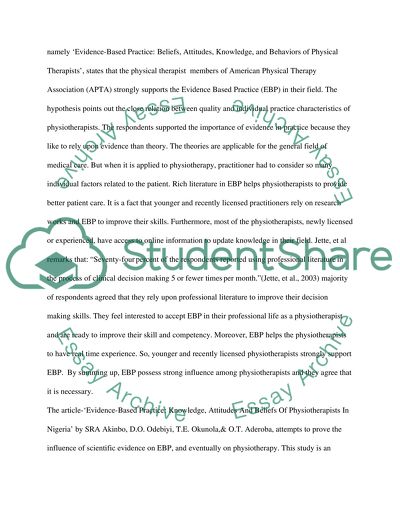Cite this document
(“Evidence Based Practice amongst Physiotherapists. Attitudes, Essay”, n.d.)
Evidence Based Practice amongst Physiotherapists. Attitudes, Essay. Retrieved from https://studentshare.org/miscellaneous/1551623-evidence-based-practice-amongst-physiotherapists-attitudes-knowledge-and-barriers
Evidence Based Practice amongst Physiotherapists. Attitudes, Essay. Retrieved from https://studentshare.org/miscellaneous/1551623-evidence-based-practice-amongst-physiotherapists-attitudes-knowledge-and-barriers
(Evidence Based Practice Amongst Physiotherapists. Attitudes, Essay)
Evidence Based Practice Amongst Physiotherapists. Attitudes, Essay. https://studentshare.org/miscellaneous/1551623-evidence-based-practice-amongst-physiotherapists-attitudes-knowledge-and-barriers.
Evidence Based Practice Amongst Physiotherapists. Attitudes, Essay. https://studentshare.org/miscellaneous/1551623-evidence-based-practice-amongst-physiotherapists-attitudes-knowledge-and-barriers.
“Evidence Based Practice Amongst Physiotherapists. Attitudes, Essay”, n.d. https://studentshare.org/miscellaneous/1551623-evidence-based-practice-amongst-physiotherapists-attitudes-knowledge-and-barriers.


